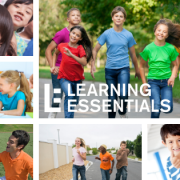American Heart Month—Teen Relationships Pt. II
In continuing our look at unhealthy teen relationships, we hope to not only educate families on the warning signs, but also equip parents with methods to intervene. It is important to recognize that an unhealthy relationship is built by manipulation, coercion, intimidation, and by chipping away at a person’s self-worth. Because the abuse can have such a stronghold, it is crucial that parents know how to get their children out when problems begin to arise with their child’s romantic partner.
If suspicions arise, it is probably a parent’s first instinct to either “forbid” the relationship, or criticize the boyfriend/girlfriend in an effort to get their child to open his/her eyes to the issues. Parents should stifle both of these urges. Forbidding a teen from doing anything, especially seeing a partner, has a tendency to have an adverse effect. Rather than pulling the two apart, the demand might actually drive the two closer together.
- Instead, encourage time apart or to spend more time with close friends. Help your teen plan an “all girls” or “all boys” excursion, activity, sleepover, or weekend trip. The key is to create subtle distance by reminding children of their other friends and family that may have gotten the boot when the toxic relationship began.
- Instead of outright bad-mouthing their partner, focus the conversation around your teen’s feelings. Ask questions like, “I see you’ve been down, anxious, depressed and short-tempered recently, do you know what might be causing this?” Or, “how do you feel when so-and-so yells at you, criticizes you, controls you, calls constantly, etc.?” Your goal is to highlight the concerning behaviors by examining the effects they have on your child, not by outwardly criticizing the partner or abuser. Use your own experiences with controlling or difficult relationships or friendships to create a space for dialogue that is free of judgment. In the simplest, non-threatening way, you want teens to recognize the negative effects that this unhealthy relationship is having on them.
- Monitor and limit phone use if necessary, including text messages, voicemails, email, etc. Frame the conversation as though it is in your child’s best interest to give the phone a break during certain times of day. Create family expectations that during and after dinner, phones should be used minimally, and only for important circumstances. However, parents themselves should follow suit as well—it is difficult to ask teenagers to part with their phones if the adults are not willing to follow the same expectations.
- Seek help from a third party. An expert with a neutral vantage point, such as a child psychologist or family therapist, may be the key. Oftentimes, teens feel that parental advice is meant to control them or persuade them to do whatever it is that the parent suggests. A neutral third party willing to listen and absorb the whole situation from multiple sides will be better equipped at getting through to your teen. He or she is trained to help mediate family strife. Therapists are also often able to shed light on an issue without casting judgment or blame, making teens more apt to listen.
- Expose your teen to new experiences, hobbies, or activities as a means of taking his or her mind off of the significant other. Set up a family movie marathon, visit a local museum or art studio, go indoor rock climbing, plan a spa day, try cooking a new recipe together, or go to the driving range. The list is limitless when it comes to finding new outings for the family. Whatever you decide, make sure that your teen enjoys the activity and that it doesn’t feel forced or contrived. The point is to create space between your teen and his or her significant other, while showing your teen that there are plenty more happy experiences to seek beyond this controlling relationship.











